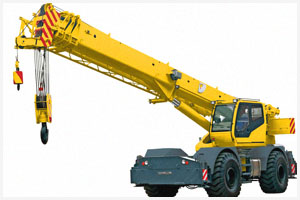
Mobile cranes are heavy duty machines for lifting and transferring the desired loads and saving both labor and time. They are also auxiliary machines that can be easily taken with the necessary safety measures and are not too complicated to use.
As the name suggests, mobile cranes are mobile cranes that can go anywhere. In a wheeled or crawler construction, there are models that look like trucks, as well as mobile crane models that look like a standard backhoe. Mobile cranes are specially manufactured and vary according to the intended use.
Mobile cranes are used in many areas, from the construction site to the machinery industry. In addition to all these areas of use, there are mobile cranes designed to carry household goods. Whatever the purpose of use, the characteristics of each mobile crane, load carrying capacity and operating principles may vary.
Mobile cranes whose main purpose is to lift and transport the desired load from one place to another, lifting and conveying means of Annex 3 Maintenance, Repair and Periodic Inspections of the Regulation on Health and Safety in the Use of Work Equipment published by the Ministry of Labor and Social Security. and are widely used tools.
Mobile cranes must be able to lift and suspend at least the 1,25 floor of the declared load effectively and safely. Furthermore, mobile cranes must have load brakes that are resistant to this load and of sufficient strength. This feature is the first point to be examined during the examinations.
Mobile cranes used in heavy load lifting and transporting unloading are dangerous with these features. In order to protect the health of the workers and to provide a safe working opportunity, mobile cranes should be checked at regular intervals.
According to the Regulation on Health and Safety in the Use of Work Equipment, mobile cranes must be inspected at least once a year unless otherwise specified in the relevant standards. If available, previous inspection reports should be available. The first point to check is whether the previously determined nonconformities are resolved. The mobile crane is then visually inspected and examined for any visible cracks, loosening of the bolts, problems with the various connections and the condition of the hook. The electrical elements of the mobile crane are then controlled.
The mechanical controls of the mobile crane are then carried out. In the next step, functional checks of the mobile crane are made. In the unloaded state, it is checked whether it performs the desired functions or not. Finally, load lifting tests are carried out in the last stage. Dynamic load tests with 1.25 solid load of capacity and static load tests with 1.5 solid load of capacity are performed.